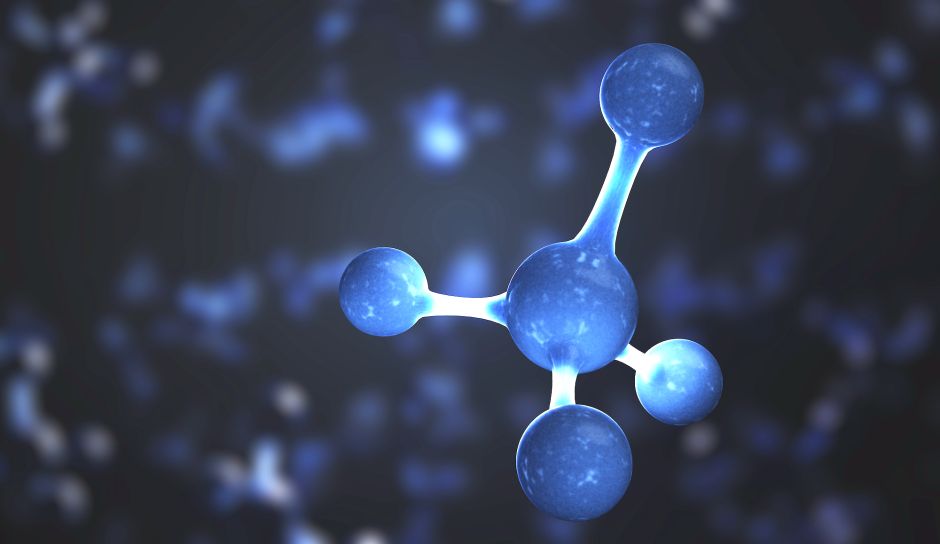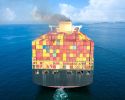Shipping to use three times more blue ammonia than green by 2050

According to a new study from DNV, the use of ammonia as fuel in shipping will increase from 2.3 million tons per year in 2030 to 245 million tons per year by 2050. Most of this ammonia will be blue, produced through carbon capture and bunkering.
Ammonia, which itself contains no carbon, is predicted to become one of the major future fuels for shipping. However, today almost all ammonia (mainly used for fertilizer production) is produced from hydrocarbons, which offers no climate benefits. The idea is that future shipping fuel will be made from so-called green ammonia, which is produced from green electricity. However, the availability of green electricity will be limited in the future, and therefore other climate-friendly technologies are needed to produce future shipping fuel (currently, no ships run on ammonia). This is where blue ammonia comes into play. This type of ammonia is produced using natural gas or coal as raw material, but the carbon dioxide generated during production is captured and either stored in underground reservoirs (so-called CCS technology) or used for other purposes.
Since blue ammonia is made from fossil gas, there is a discussion about whether it can be classified as "low-carbon" at all. However, many consider blue ammonia to be part of the transition to more sustainable ammonia production, and in its new report "Availability of Green and Blue Ammonia in 2030 to 2050," DNV states that it views both green and blue ammonia as "clean."
So how much ammonia will shipping require in the future? According to DNV, development will proceed at a relatively leisurely pace until 2030, when demand will go from zero to 2.3 million tons per year (MTPA). But then there will be a rapid increase to 62 million tons per year by 2040, followed by an acceleration to 245 million tons per year by 2050! About 75 percent of this ammonia will be blue.
Global ammonia production will need to be significantly increased. An additional 200 million tons per year will be required as raw material for chemicals such as fertilizers by 2050, but here the source is predicted to be gray hydrogen made from fossil fuels (39%), followed by blue (35%) and green (26%).
According to the report, blue and green ammonia will cost about the same by 2050 because "the cost curves of both technologies will flatten out after 2040." Still, three times more blue ammonia than green will be produced. This is because, according to DNV, existing facilities for the production of gray and brown ammonia can be more easily converted to produce blue ammonia than green.
According to the report, ammonia will not be used for power generation at all, either alone or in co-combustion with coal or natural gas, as it would be prohibitively expensive.
-
 Ny studie: Eldrivna pendelbåtar kan effektivisera Stockholms kollektivtrafik
Ny studie: Eldrivna pendelbåtar kan effektivisera Stockholms kollektivtrafik -
 EU: Sjöfartens utsläpp ökar
EU: Sjöfartens utsläpp ökar -
 Sociala relationer påverkar val av bränsle
Sociala relationer påverkar val av bränsle -
 Sjöfartens omställning kräver ”mjukare” påtryckningar
Sjöfartens omställning kräver ”mjukare” påtryckningar -
 Hon hade avtalad tid med Kapten ynkrygg
Hon hade avtalad tid med Kapten ynkrygg -
 Lighthouse omvärldsanalys 2025 – osäkerhet och tullar präglar sjöfarten
Lighthouse omvärldsanalys 2025 – osäkerhet och tullar präglar sjöfarten -
 Se seminariet Shipping in the Marine Environment
Se seminariet Shipping in the Marine Environment -
 Vad betyder egentligen de 90 procenten?
Vad betyder egentligen de 90 procenten? -
 Hålla där...
Hålla där... -
 Ny rapport: Klimatförändringarna ett hot mot de flesta större hamnar i världen
Ny rapport: Klimatförändringarna ett hot mot de flesta större hamnar i världen

